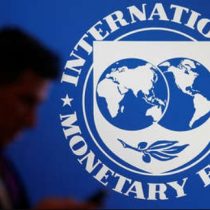
Latin American economies will suffer a more thunderous contraction than anticipated this year due to the coronavirus pandemic, the International Monetary Fund (IMF) said Wednesday, at a time when the region is facing high rates of infection that hinder recovery.
In its June Global Economic Outlook report, the IMF cut its calculation for the region’s GDP variation to a decline of 9.4% in 2020, relative to the 5.2% decline estimated in April, as the effects of COVID-19 have been deeper than expected in the first quarter.
The new projections yielded more adverse outlooks for major Latin American economies. Mexico, heavily influenced by its ties with the United States, will see its economy contract by 10.5% this year, the IMF said, a drastic reduction from the projected 6.6 percent drop in April.
As Brazil, the focus of the epidemic in South America and with the second largest number of cases in the world, will register a fall in its GDP of 9.1% in 2020, since the previous projection of a decline of 5.3%, the Washington-based agency said.
Early data from the second quarter suggest sharper-than-expected contractions, and the pandemic is still spreading in American populations, the IMF stressed, so restrictive measures will continue to deteriorate the economic landscape in the region.
“In economies that are still struggling to control infection rates, the need to continue quarantines and social estrangement measures will have a bigger impact on activity,” the report said.
The IMF noted that Brazil’s economy will bounce back 3.6% in 2021 and Mexico’s by 3.3%.
In Argentina, the third Latin American economy, strict quarantine and productive paralysis will cause a 9.9% decline in its GDP this year, the institution calculated, with a projected recovery of 3.9% in 2021.
The IMF also dramatically reduced the global economy forecast to -4.9% for this year, swept away by the 8% drop in U.S. GDP and the handbrake on China’s activity. For the first time, the entity emphasized, all regions of the world will experience negative growth, albeit with substantial differences.
Downside risks remain significant, he added, and the future scenario will depend to a large extent on countries’ ability to contain the health emergency, revive production and employment, and refloat domestic demand.





